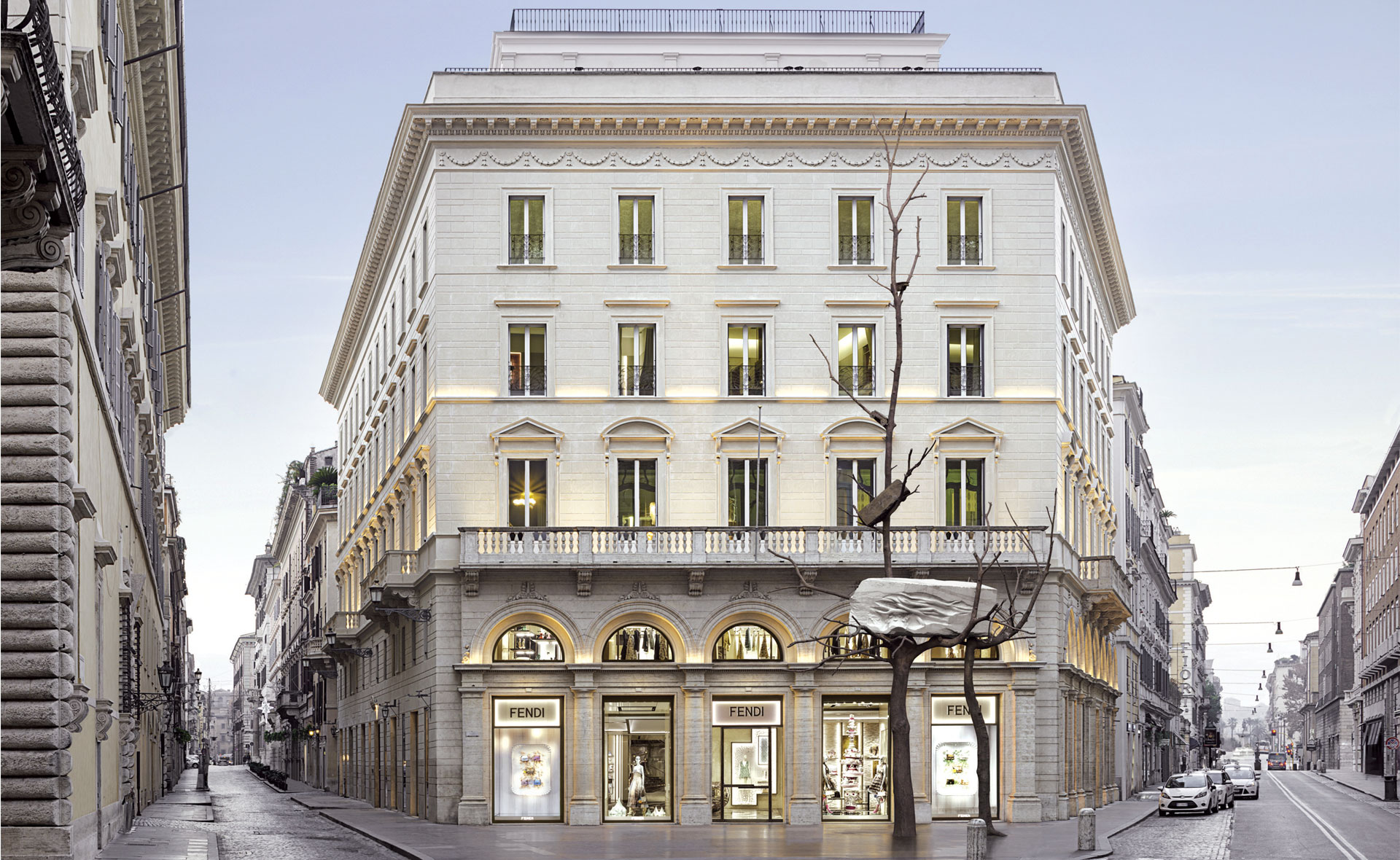Two works by Giuseppe Penone, one of the most prominent protagonists of contemporary art, can be admired in Rome in front of the Fendi building.

In Largo Goldoni, at the heart of “Tridente”, in the centre of Rome, Giuseppe Penone’s plastic forms bring the city to life and remind us of the importance of the dialogue between man and nature, even in places dominated by the urban landscape.
The permanent installation that can be admired in this nook of the centre is called Foglie di pietra (“Stone Leaves”) and consists of two bronze trees. Towering at heights of 18 and 9 metres respectively, they harmoniously intertwine their branches to support an 11-tonne block of marble. It is a sculpture brimming with life that combines natural elements and carved stone, evoking landscapes with ancient ruins re-absorbed by vegetation.
The work is perfectly integrated into the surrounding environment and was donated to the city of Rome by Fendi, which has a very special relationship with the capital. Indeed, the company was founded here in 1925 by Edoardo Fendi and Adele Casagrande, and now it is one of the most important and enterprising sponsors of artistic and architectural projects in the city.
The work Foglie di pietra recalls other works by Penone exhibited in his last solo exhibition, which was held from January to July 2017 at Palazzo della Civiltà Italiana, the fashion house’s headquarters. Fendi carried out an impressive conservation and restoration project on the wonderful building symbolic of the Eur district, which was completed two years ago.
A solid, sharp-edged gem of modern Roman architecture, the Colosseo Quadrato was finally restored to its original splendour, and the poetics of Giuseppe Penone celebrated the transformative forces of its material, blending with the rational space in which it was immersed. Wood, earth, bronze and terracotta mesmerised visitors, becoming the undisputed protagonists of the work by this great contemporary artist.
Penone was born in Piedmont in 1947, and is one of the greatest exponents of Arte Povera. He is known for his fluid vision of the world, which leads him to express himself through a wide variety of means, from graphic signs to words and, in terms of space, from inorganic to organic materials. He is best represented by the trees of Largo Goldoni since, as the artist himself explains, «a tree is a being that memorises its shape, and its shape is necessary for its life, so it is a perfect sculptural structure because it has the necessity of existence».
